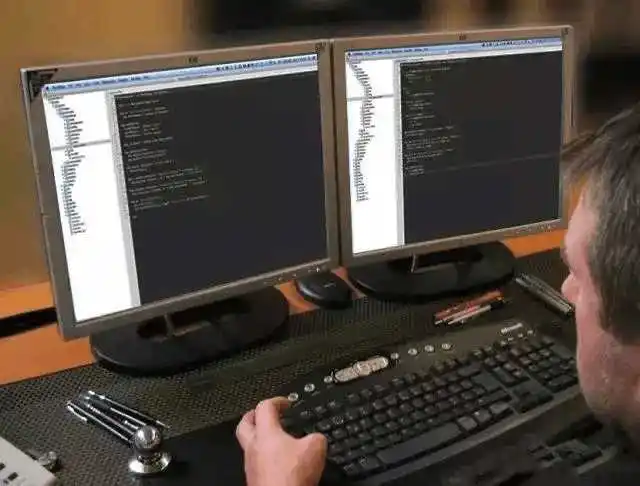
android 相机变焦

Your camera may boast “8x zoom”, but most DSLRs do not advertise values like these. So how do they compare? The answer is more complex than you may think.
您的相机可能拥有“ 8倍变焦”,但大多数数码单反相机都不会发布此类值。 那么他们如何比较? 答案比您想象的要复杂。
That “8x” value that doesn’t necessarily mean objects in the photo will look 8 times bigger than they do with your eyes. It just means things will be 8 times bigger than its most zoomed-out position—but two cameras in their most zoomed-out positions will not look the same size.
“ 8x”值不一定意味着照片中的物体看起来会比用眼睛大8倍。 这只是意味着事物将比其最大缩放位置大8倍-但是处于最大缩放位置的两个摄像机看起来将不一样。
Every lens affects your image in a different way. A wide angle lens warps the perspective in the image so it shows more than you could see with your naked eye. A telephoto lens does the opposite, zooming in like a telescope to distant objects. These things are separate from the actual “zoom” function on your camera, so one 8x zoom lens may not make objects as large as another 8x zoom lens.
每个镜头都会以不同的方式影响您的图像。 广角镜会扭曲图像中的透视图,从而显示出比您用肉眼所见更多的视角。 长焦镜头则相反,像望远镜一样放大远处的物体。 这些东西与相机上的实际“变焦”功能是分开的,因此一个8倍变焦镜头可能无法像另一个8倍变焦镜头那样产生物体。
So how do we calculate how much bigger an object appears in a photo compared to your eyes, where you’re currently standing? To find that out, you need to know the focal length and field of view of the lens you’re using.
那么,与您当前站立的眼睛相比,我们如何计算照片中出现的物体更大呢? 为了找出答案,您需要知道所使用镜头的焦距和视野 。
In photography, the focal length of a lens is the distance between a the camera’s sensor and the internal components of the lens itself. This focal length determines how close objects look to your camera and what part of the scene actually fits within the picture—otherwise known as your field of view. A massive, telescope-like lens with a 1000mm focal length will make objects look very close. Lenses with smaller focal lengths will make objects appear farther away.
在摄影中,镜头的焦距是相机传感器与镜头本身内部组件之间的距离。 该焦距确定物体与相机的距离以及场景中实际适合画面的部分(也称为视野)。 巨大的类似望远镜的镜头,焦距为1000mm,将使物体看起来非常接近。 焦距较小的镜头会使物体看起来更远。
Many lenses can “zoom” to different focal lengths. For example, an 18-135mm lens will let you zoom from an 18mm focal length to a 135mm focal length.
许多镜头可以“变焦”到不同的焦距。 例如,使用18-135mm镜头可以将焦距从18mm缩放到135mm。

Here’s an example. I shot the following two images with my Canon 650D and an 18-135mm lens.
这是一个例子。 我用佳能650D和18-135mm镜头拍摄了以下两张图像。
The first photo was taken at the shortest focal length: 18mm. It’s a pretty wide field of view.
第一张照片是在最短焦距下拍摄的:18mm。 这是一个相当广阔的视野。

The next photo was taken in the exact same place half a second later. The only difference is that I’ve zoomed in to use the lens’ longest focal length, 135mm.
下一张照片是在半秒后在完全相同的地方拍摄的。 唯一的不同是,我放大了镜头的最长焦距135mm。

As you can see, the field of view is a lot narrower in the second photo than the first, because we’ve zoomed in on the mountains.
如您所见,第二张照片的视野比第一张照片的视野要窄得多,因为我们已经放大了山脉。
Here’s the catch, though. Different lenses, at their shortest focal length, will show things differently. Remember that 1000mm telescope lens? Even if you don’t zoom in with it, you’re still seeing things much closer than a camera with an 18-135mm lens. So focal length alone isn’t enough to say “this lens shows objects X times larger than they appear to human eyes”.
不过,这是要抓住的地方。 不同的镜头,在其最短焦距下,会呈现出不同的景象。 还记得那1000mm望远镜镜头吗? 即使您不使用它进行放大,您仍然可以看到比18-135mm镜头的相机更近的东西。 因此,仅焦距不足以说“该镜头所显示的物体比人眼看到的物体大X倍”。
For that, we need to know what focal length compares to the human eye.
为此,我们需要知道什么焦距与人眼相比。
Comparing cameras to eyes is a difficult task. They both capture images, but do it in very very different ways. This means that it’s impossible to say that human eyes are the equivalent of a 35mm lens with an aperture of f/5.6, for example; the concepts just aren’t interchangeable. Instead, we’ve got to compare properties in other ways: like using the field of view.
将相机与眼睛进行比较是一项艰巨的任务。 它们都捕获图像,但是以非常不同的方式来捕获图像。 这意味着不可能说人眼相当于光圈为f / 5.6的35mm镜头; 这些概念是不能互换的。 相反,我们必须以其他方式比较属性:例如使用视野。
A “normal” lens, then, is a lens that approximates the field of view of the human eye. Oskar Barnack, who created the Leica camera, arbitrarily set it to 50mm for a full frame camera, although any focal length between about 40mm and 58mm will appear roughly normal. On a crop sensor camera, the normal focal length is somewhere between 28mm and 36mm.
因此,“正常”镜片是近似人眼视野的镜片。 创造徕卡相机的奥斯卡·巴纳克(Oskar Barnack)将全画幅相机任意设置为50mm,尽管大约40mm至58mm的焦距看起来都是正常的。 在作物传感器相机上 ,正常焦距在28mm至36mm之间。
Okay, we’re finally ready to answer that original question: compared to how we normally see things, how much more or less of the scene will a photo show? To do this, we’re going to calculate the relative fields of view for lenses with different focal lengths.
好的,我们终于可以回答这个原始问题了:与我们通常看到的事物相比,照片将显示多少场景? 为此,我们将计算具有不同焦距的镜头的相对视场。
The formula is quite simple: just divide 50 by the focal length you’re using for the photo (because a normal lens is 50mm, as we discussed above). If you’re using a crop sensor camera, divide the equivalent focal length on a full frame camera.
公式很简单:只需将50除以用于照片的焦距即可(因为如上所述,普通镜头为50mm)。 如果您使用的是作物传感器相机,请在全画幅相机上除以等效的焦距。
Let’s look at an example. A 28mm lens has almost 1.786 times the field of view of a normal lens (50/28 = 1.786). For simplicity’s sake, we’ll say it’s “almost twice the field of view”. That means that an object in a photo taken with an 28mm lens will look about half the size of something in a similar photo taken with a normal lens—or, half the size of what you’re eyes see standing in the same spot.
让我们来看一个例子。 28毫米镜头的视野是普通镜头的近1.786倍(50/28 = 1.786)。 为简单起见,我们将其称为“几乎两倍于视野”。 这意味着,用28mm镜头拍摄的照片中的物体看起来大约是用普通镜头拍摄的类似照片中物体的一半,或者是您站在同一位置看到的眼睛的一半。
A 200mm lens has one quarter the field of view of a normal 50mm lens (50/200 = 1/4). So an object in a photo taken with a 200mm lens will look about four times bigger than what your eyes see.
200毫米镜头的视野是普通50毫米镜头的四分之一(50/200 = 1/4)。 因此,用200mm镜头拍摄的照片中的物体看起来比眼睛所看到的要大四倍。

In the image above, you can see that comparison in action. The first photo was taken with my 18-135 at 18mm (equivalent to 28mm on a full frame camera), the second was taken at 35mm (equivalent to a normal-ish 56mm on a full frame camera) and the final shot was taken at 135mm (equivalent to 216mm on a full frame camera). The sunglasses in the first photo are about half the size of the ones in the second, and the ones in the second are about a quarter the size of the ones in the third. Here’s a close up of them side-by-side.
在上图中,您可以看到实际的比较。 第一张照片是用我的18-135相机在18mm(相当于全画幅相机上的28mm)上拍摄的,第二张照片是在35mm(相当于全画幅相机上的正常56mm)上拍摄的,最后一张照片是在135毫米(相当于全画幅相机的216毫米)。 第一张照片中的太阳镜大约是第二张中的太阳镜的一半,第二张中的太阳镜是第三张中的太阳镜的四分之一。 这是它们的并排特写。

Remember when we said “one 8x zoom lens may not make objects as large as another 8x zoom lens”? Now you understand why.
还记得我们曾经说过“一个8倍变焦镜头可能无法像另一个8倍变焦镜头那样放大物体”吗? 现在您了解了原因。
Say you buy a compact camera with a whopping 35x zoom. That sounds better than your DSLR lens with an 8x zoom, but this doesn’t mean that things look 35 times bigger than they do with your eyes. Instead, it means the ratio between the shortest and the longest focal length of that lens is 1:35. Depending on the focal length of each camera, the DSLR may make objects appear much larger, even though it has a smaller zoom. Zoom values are not necessarily comparable from camera to camera.
假设您购买了具有高达35倍变焦的紧凑型相机。 这听起来比8倍变焦的DSLR镜头要好,但这并不意味着事物看上去比用眼睛大35倍。 相反,这意味着该镜头的最短焦距和最长焦距之比为1:35。 根据每台相机的焦距,即使单反相机的变焦较小,它也会使物体看起来更大。 相机之间的变焦值不一定是可比的。
So don’t be tempted by a camera just because it has a higher zoom level—that doesn’t tell the whole story. And remember: compact cameras are good, but they’re still no match for a DSLR when it comes to image quality, sensor size, low light performance, autofocus, and dozens of other non-zoom features.
因此,不要仅仅因为摄像机具有更高的变焦级别而被摄像机吸引,这并不能说明全部情况。 请记住: 紧凑型相机是不错的选择 ,但在图像质量,传感器尺寸,弱光性能,自动对焦以及许多其他非变焦功能方面,它们仍然无法与DSLR相提并论。
Focal lengths and their relative field of views can be tricky concepts to grasp. Most lenses don’t make things appear that much bigger than normal, instead the advantages of DSLRs lay elsewhere. If you want to get really close to something miles away, a super zoom compact camera will do better, but a DSLR will take much better images of everything else.
焦距及其相对的视野可能是棘手的概念。 大多数镜头不会使事物看起来比正常情况大很多,而是DSLR的优势在于其他地方。 如果您想真正靠近几英里远的地方,那么超级变焦紧凑型相机会做得更好,但是DSLR可以拍摄出更好的其他所有图像。
翻译自: https://www.howtogeek.com/298812/how-does-the-8x-zoom-on-my-point-and-shoot-compare-to-my-dslr/
android 相机变焦

 京公网安备 11010802041100号 | 京ICP备19059560号-4 | PHP1.CN 第一PHP社区 版权所有
京公网安备 11010802041100号 | 京ICP备19059560号-4 | PHP1.CN 第一PHP社区 版权所有